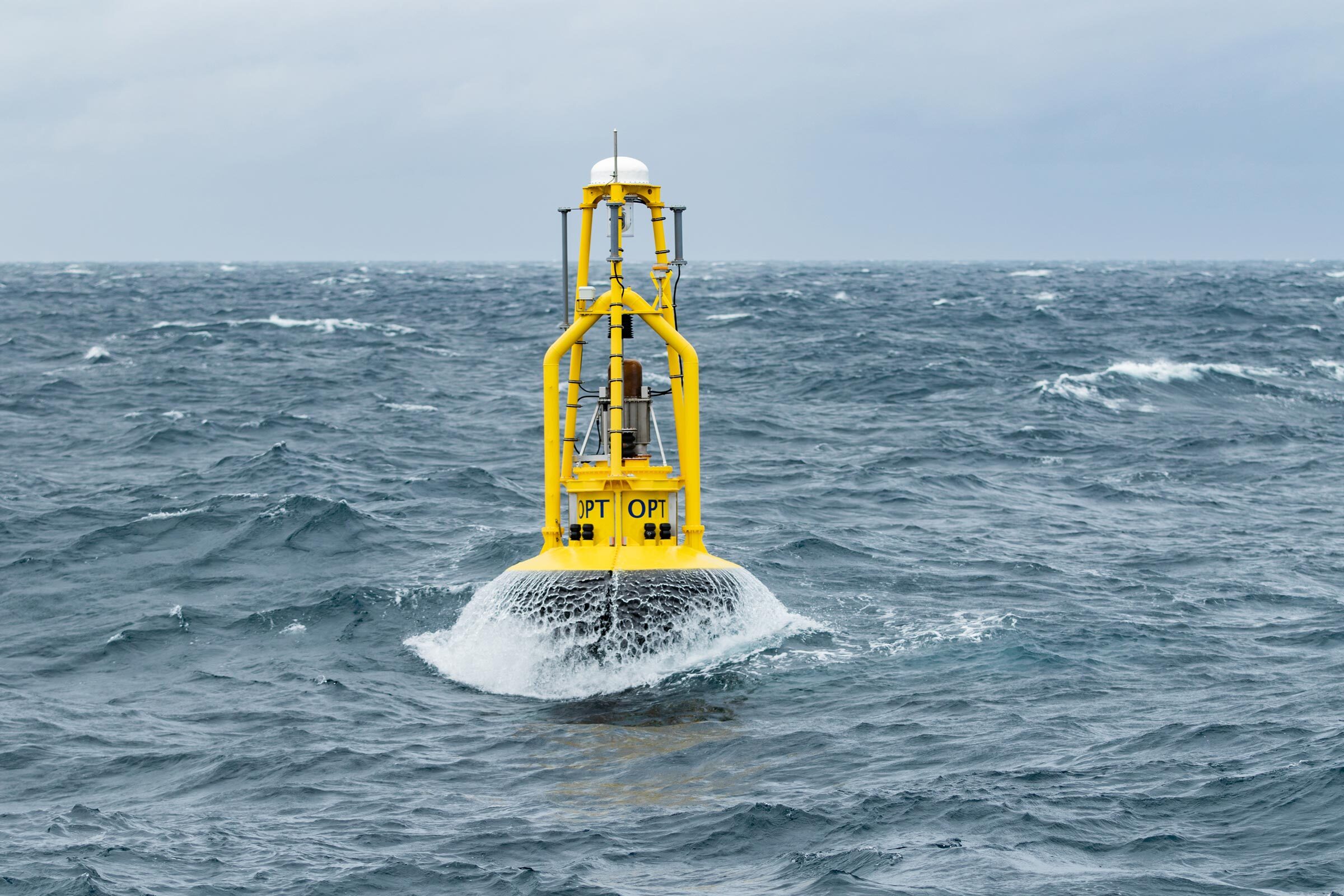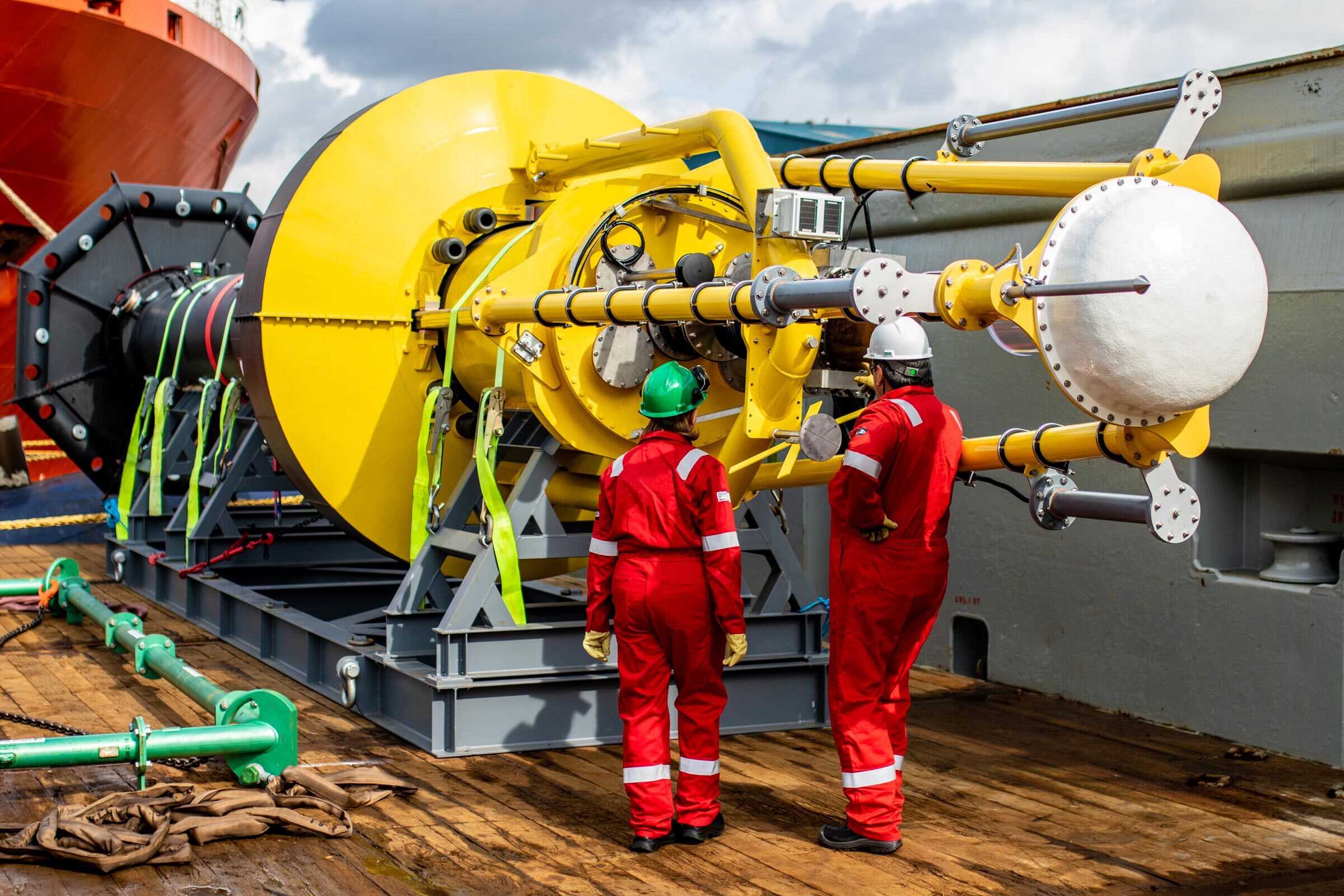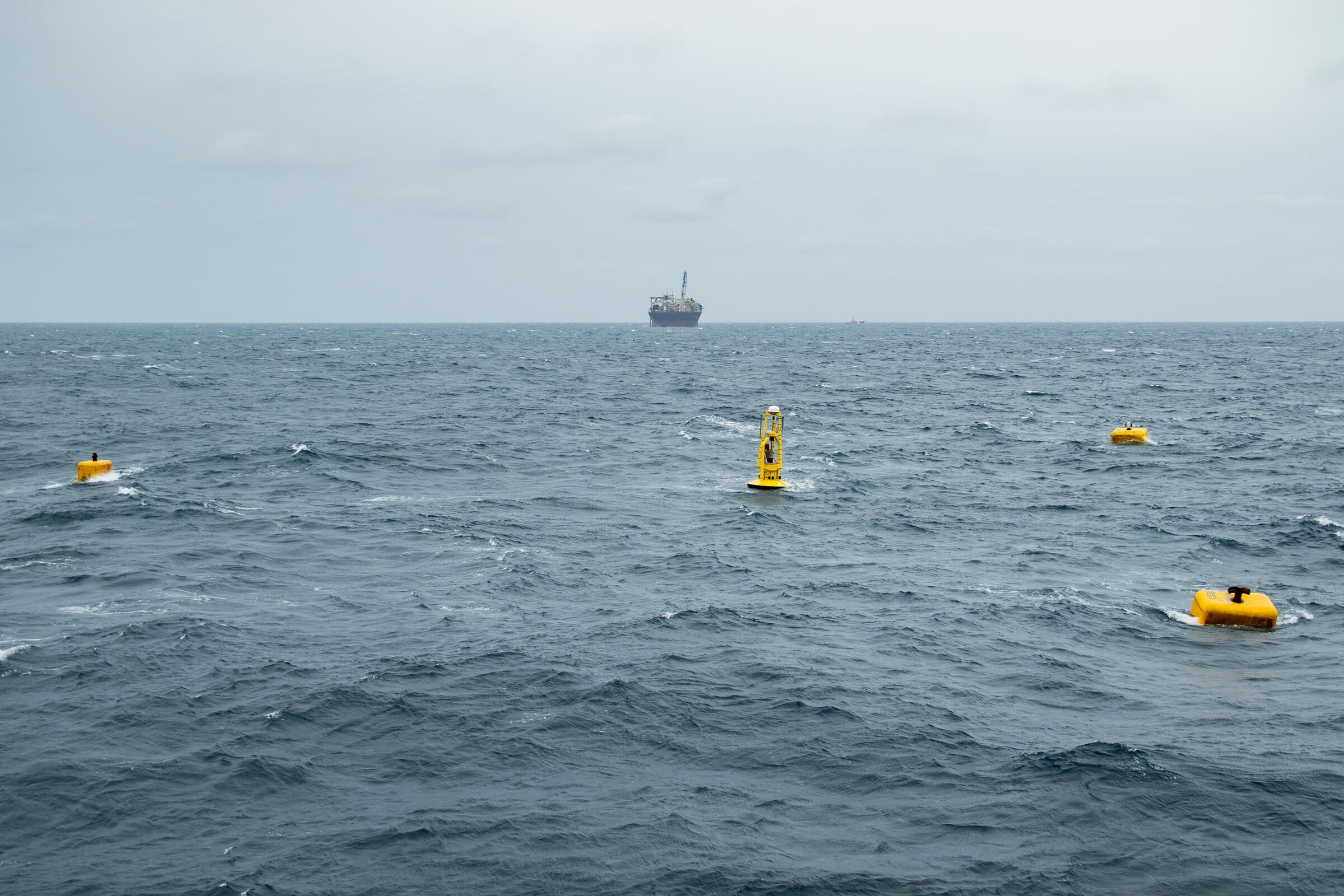PB3 PowerBuoy
OPT’s PB3 PowerBuoy® can act as an Uninterruptable Power Supply (UPS) which constantly recharges itself by harvesting energy from the waves. It is ocean-deployed, moored and floats over the point of use and can operate in any ocean depth over 20 meters and up to 3,000 meters (3 km).
Master of the waves
The conversion of wave energy into electric power is carried out through a direct drive generator that continuously charges an on-board battery pack (Energy Storage System).
Power from the battery is delivered to meet application and end-user needs. This is particularly advantageous for applications that have varying power requirements including continuous and larger occasional peaks.

The PB3 PowerBuoy® supplies power continuously to on-board payloads or equipment located on the seabed while also providing real time data transfer and communication to remote shore facilities.
The PB3 PowerBuoy® is sized and designed to store sufficient electric energy to provide reliable “ride through” power in extended periods of flat-calm seas.
OPT has designed the PB3 PowerBuoy® to minimize operational costs (OPEX) whereby deployment and recovery thereof is simplified, leveraging vessels widely employed in offshore marine operations.
OPT’s PB3 PowerBuoy® can act as an Uninterruptable Power Supply (UPS) which constantly recharges itself by harvesting energy from the waves.
Maintenance intervals, by design, are every three years.
The PB3 PowerBuoy® control and management system includes self-monitoring data collection, processing and transmittal to allow pro-active maintenance strategies, thus increasing availability and operational effectiveness.


A reliable source of power in any conditions
The PB3 PowerBuoy® technology was demonstrated for a US Navy project to provide power to coastal security networks and survived rigorous sea trials, including operation off the New Jersey coast through Hurricane Irene.
Exterior payloads are anticipated to be shipped in the ISO shipping container and would require minimal on-site preparation to mount on the buoy prior to deployment.
